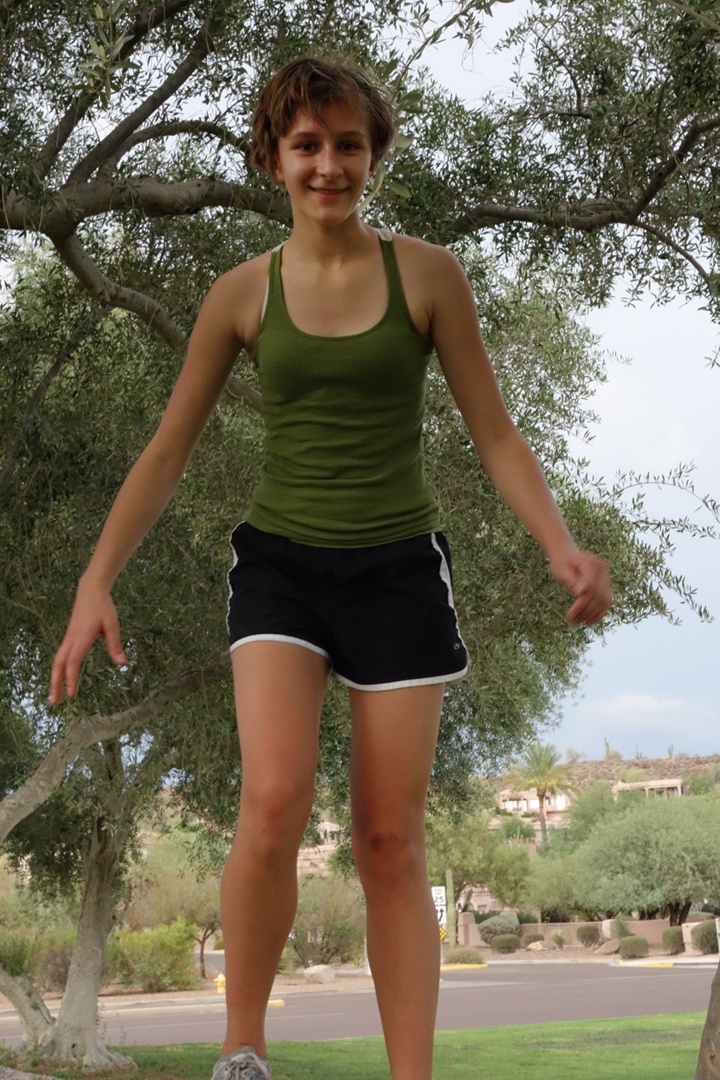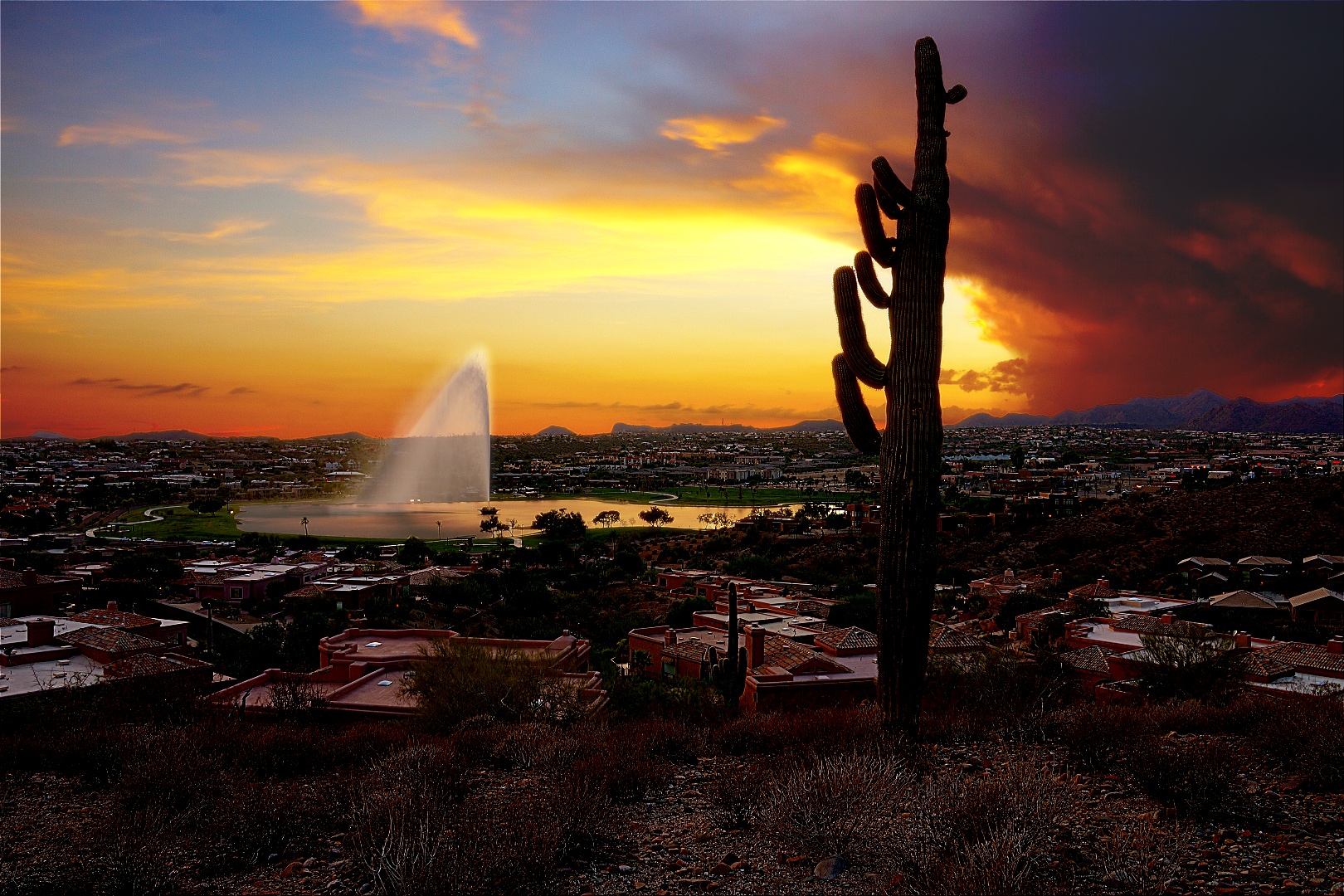Several days ago, I took some photos of the crested saguaro near the parking area for the Dixie Mine Trail Head. While I liked the night shot of the saguaro, I felt that I could do better.
So, last night, I decided to give real HDR photography a try. I went out well after sundown and brought a tripod with me. For the photo below, I used eight different exposures each taken one stop apart. I turned off image stabilization, locked the focus, and shot at f/3.5 in manual mode. The longest and brightest exposure was thirty seconds long. I wanted to go even longer so that I could use a lower ISO than 400, but that’s the longest (non-bulb) setting that my NEX-7 has. Each subsequent (and darker) exposure had the shutter open half as long as the previous exposure. My NEX-7 does not have an auto-bracketing mode that can be triggered with a remote, so I manually adjusted the shutter speed between each exposure. This is, of course, less than ideal because touching the camera in between exposures could cause it to move slightly.
I processed those eight exposures with Luminance HDR and used the Mantiuk ’08 tone mapping operation with color saturation set to 1.26 and contrast enhancement set to 1.11. I’m not going to pretend that I know what these parameters mean or even if they were optimal for my photo(s), but I’m recording them here so I’ll know what they were if I want to try something like this again.
I had a problem with the stars in the resulting image. The Earth’s position with respect to the stars changes moment to moment due to the rotation of the Earth. This was evident after merging the eight images together. For each star, there was a sequence of stars each offset from one another by a small but noticeable amount. So, using GIMP, I edited back in the stars from the brightest of the eight images. I think I could have tried to mask the sky for all but one of the exposures using Luminance HDR, but I’m better at using GIMP.

Here is a 1:1 crop of an interesting portion of the scene. In the upper right, you can see a portion of the “crested” arm of the saguaro.

Update on 2012-08-22:
I learned recently that I didn’t check the correct box to cause the HDR software that I’m using to align layers. In some instances this makes a big difference. So I reran the Luminance HDR on the same set of exposures as before, this time telling it to use hugin align_image_stack. It takes quite a while longer to do the processing but, in the case of the fountain photos, it was worth it. When it finished, I had it use Drago for the tone mapping with the default parameters (Bias = 0.85 and Pre-Gamma = 1). The output looked atrocious without any adjustment of the levels or gamma when it’s done. Nevertheless, I wrote the file out as is, choosing to do those adjustments in GIMP.
In GIMP, I found that I got good results by simply duplicating the background and then using the multiply layer mode to combine them. That result required only minor tweaking via curves. After that, I replaced the sky with the brightest of the exposures used to form the image and ran curves on the sky, making the necessary adjustments so that I saw lots of stars. Once that was done, I ran unsharp mask on the entire image with a radius of 8 pixels and an amount of 0.70.
The image below looks very similar to the one above, but it’s a bit sharper in some areas and I think the lighting and colors is better too.




















